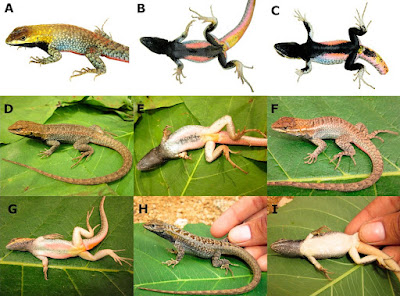Plastomeninae, a clade of fossil turtles that has recently undergone significant revision, are currently known from the Late Cretaceous to the Eocene, with some genera known to survive the end-Cretaceous mass extinction (e.g., Hutchemys). Only one taxon survives past the Paleocene into the Eocene (Plastomenus thomasii). Leer más.





We describe two new sympatric species of Stenocercus from the seasonally dry forest of the inter-Andean valley of the Mantaro River (Huancavelica department) in the Central Andes of central-southern Peru, at elevations of 1,693 to 2,920 m asl. Leer más.
Herpetologists first noticed that the global frog population and other amphibian species were declining abnormally fast during the 1980s and began working tirelessly to identify the causational factors. Knowing why amphibians are dying off, and studying the unique characteristics found in those that are persevering, may give humans the key to saving these essential species. Leer más.

Mothers invest a lot of time into the healthy development of their young. Yet, climate change is making motherhood more challenging. Water and nutrients are becoming scarce. Indeed, a recent study, led by Mathias Dezetter from the Centre for Biological Studies of Chizé in France, found that snakes are no exception. Populations of European adder (Vipera berus) may ‘dry out’ if drought conditions worsen. Leer más.

La contaminación del suelo por metales pesados contribuye a aumentar el estrés fisiológico de la culebrilla mora (Trogonophis wiegmanni), una especie de reptil adaptada a la vida subterránea, según un estudio científico. Leer más.








